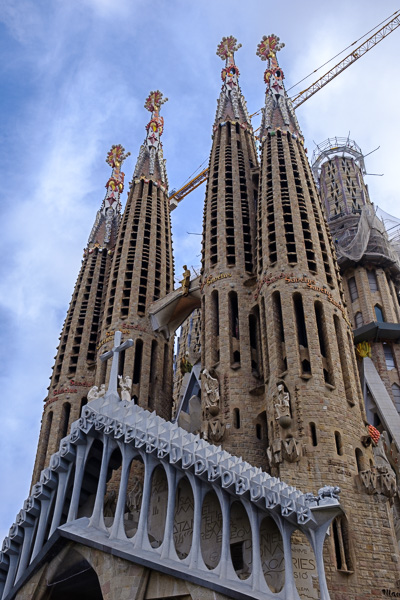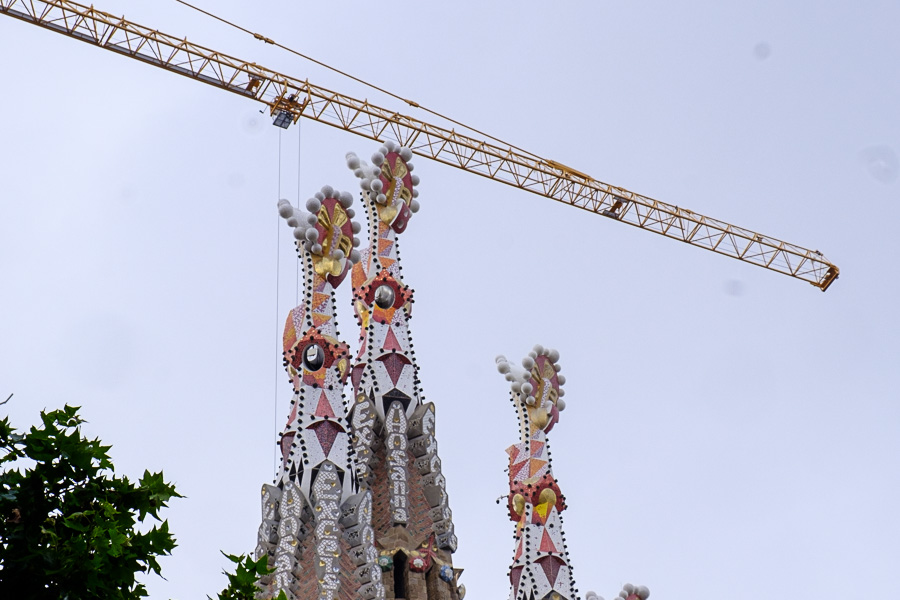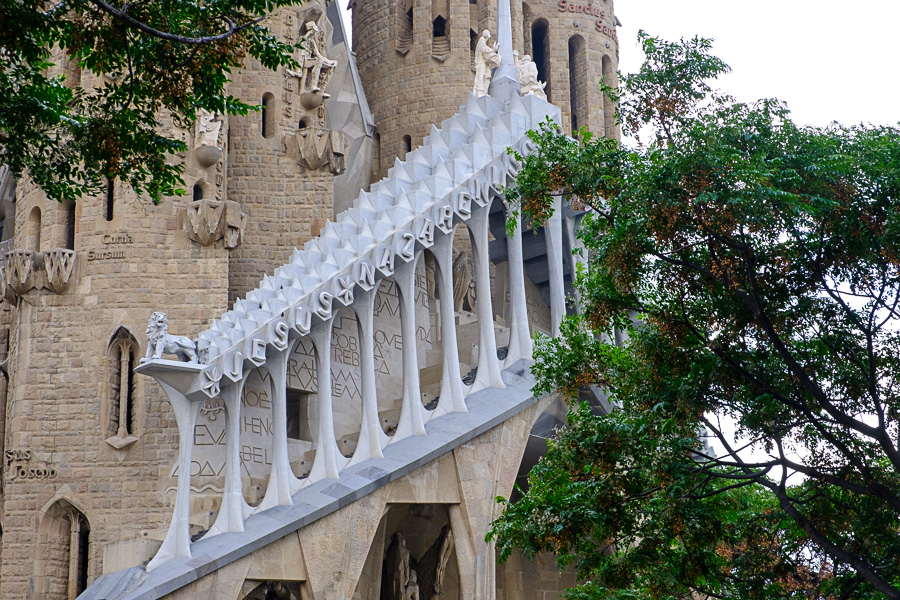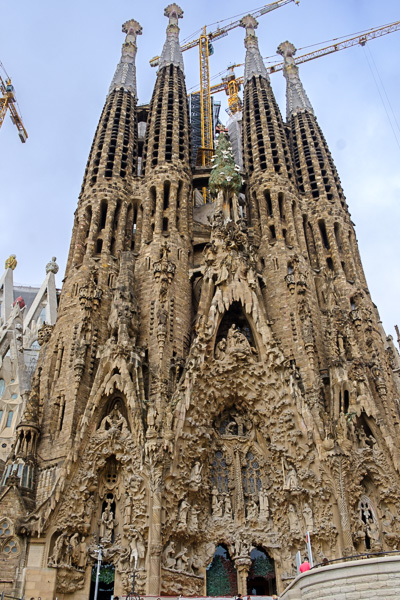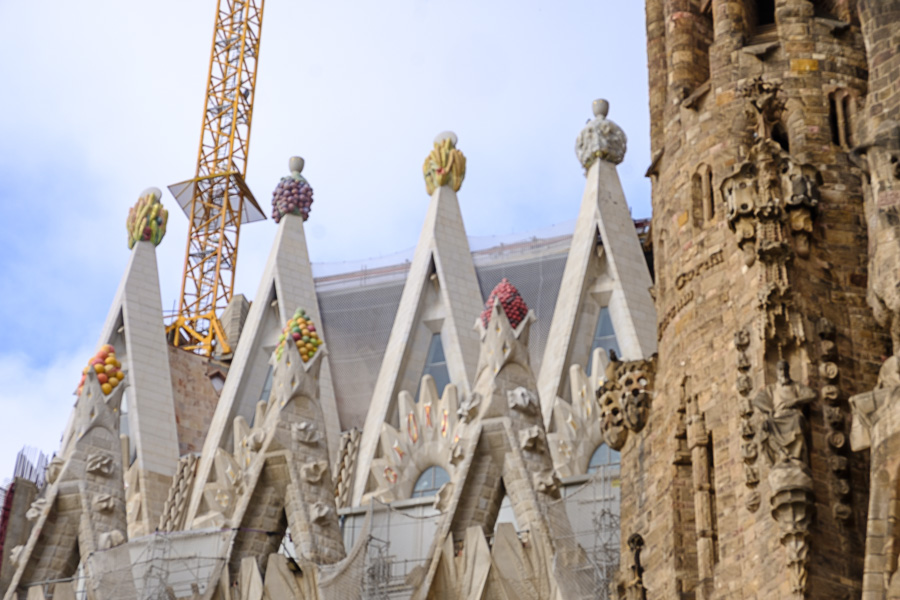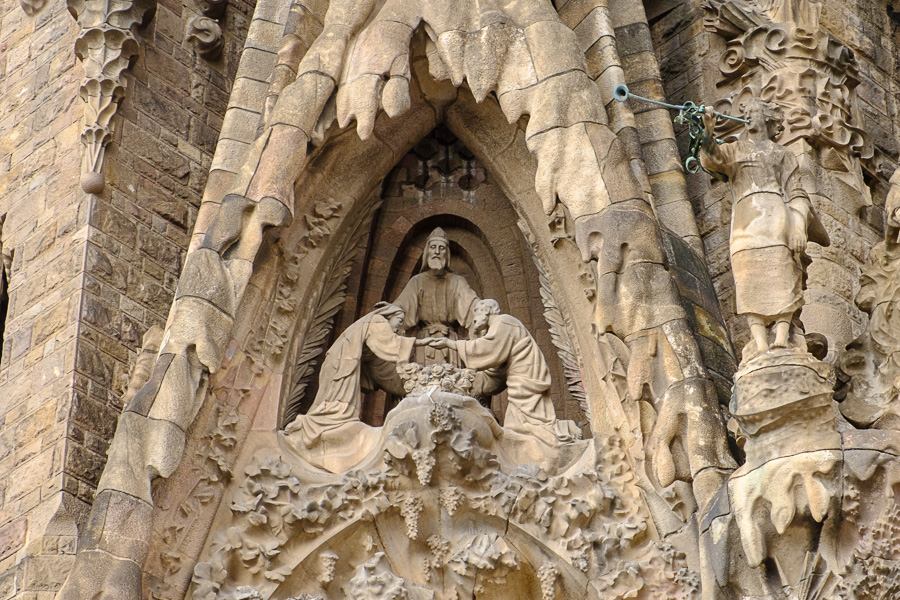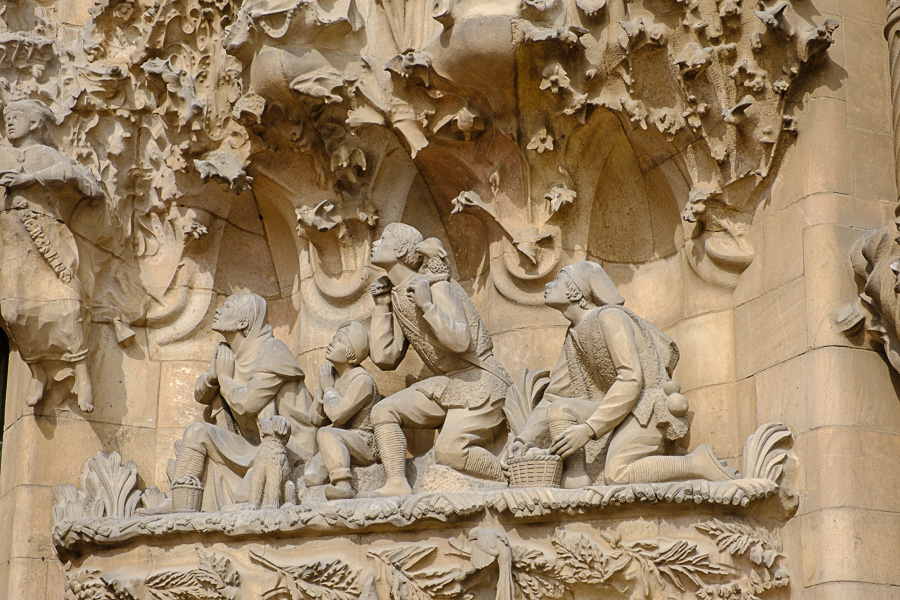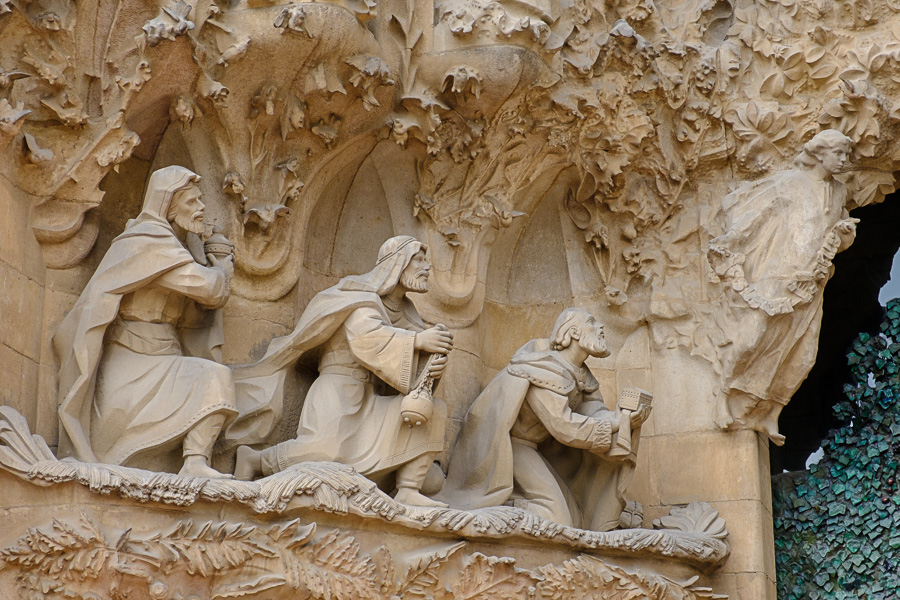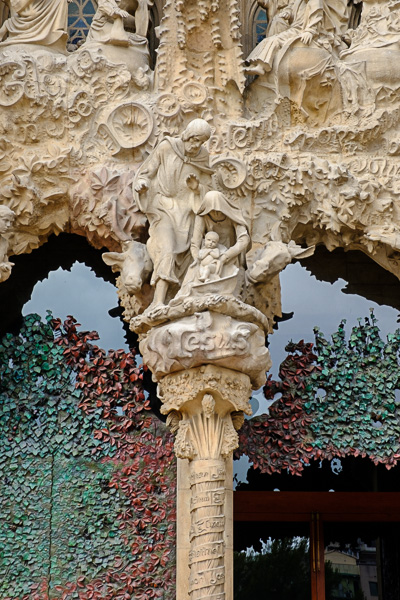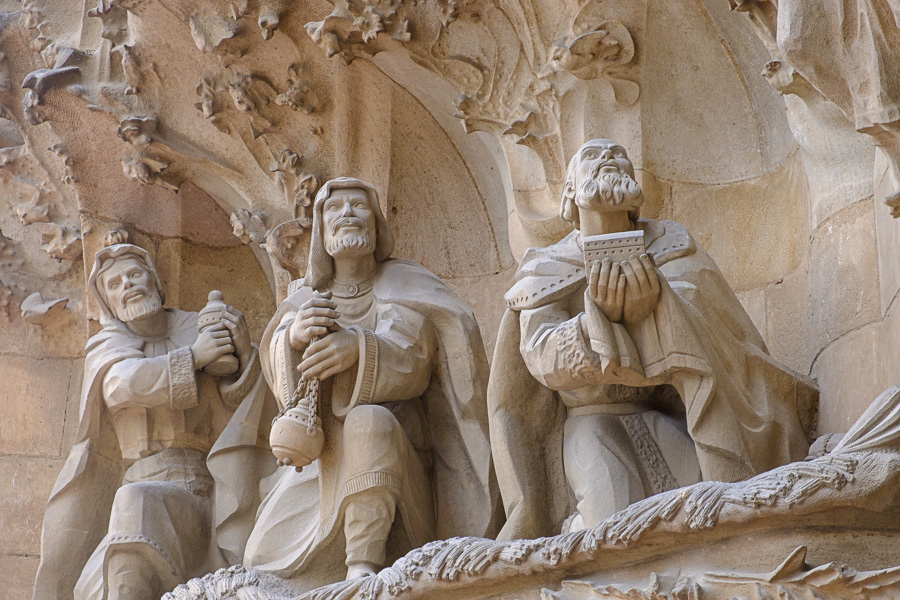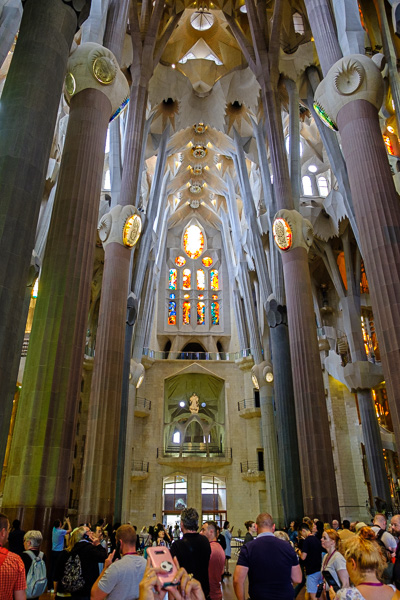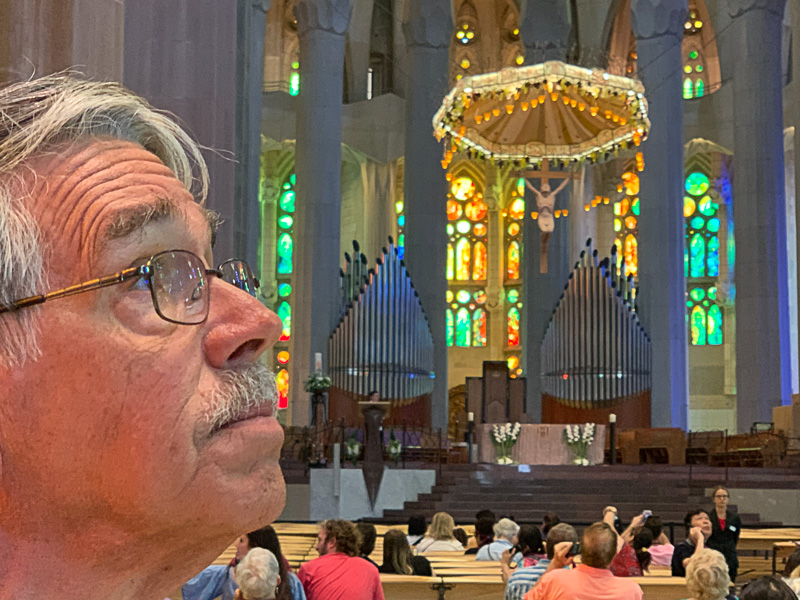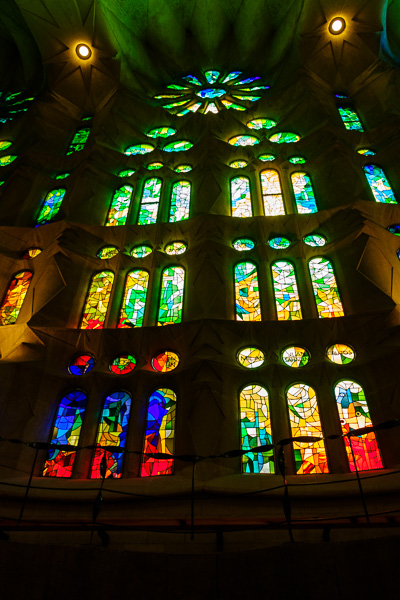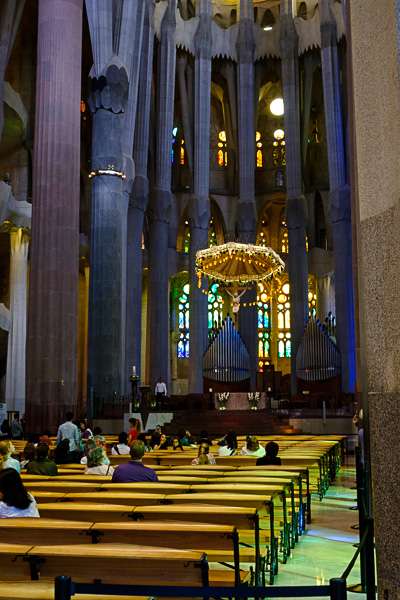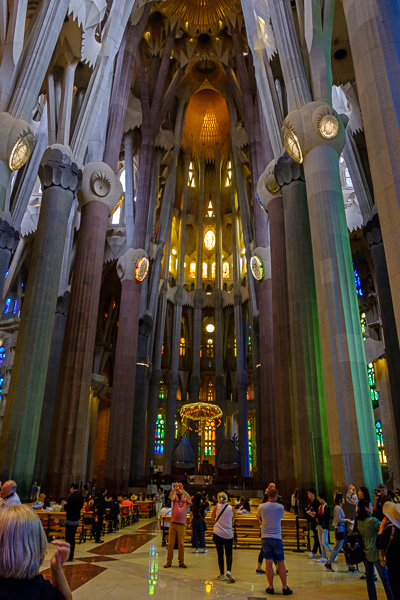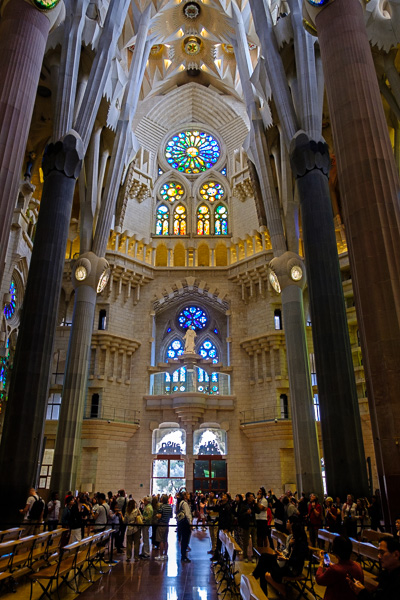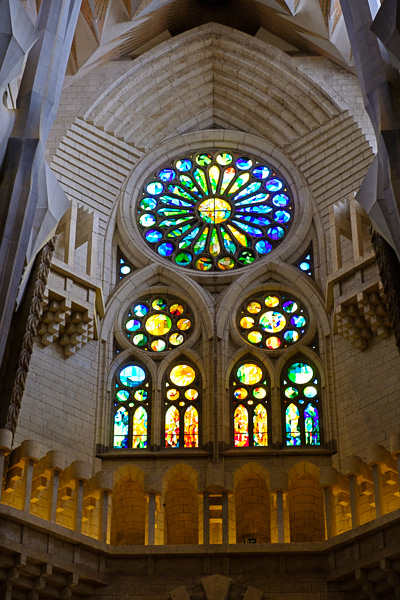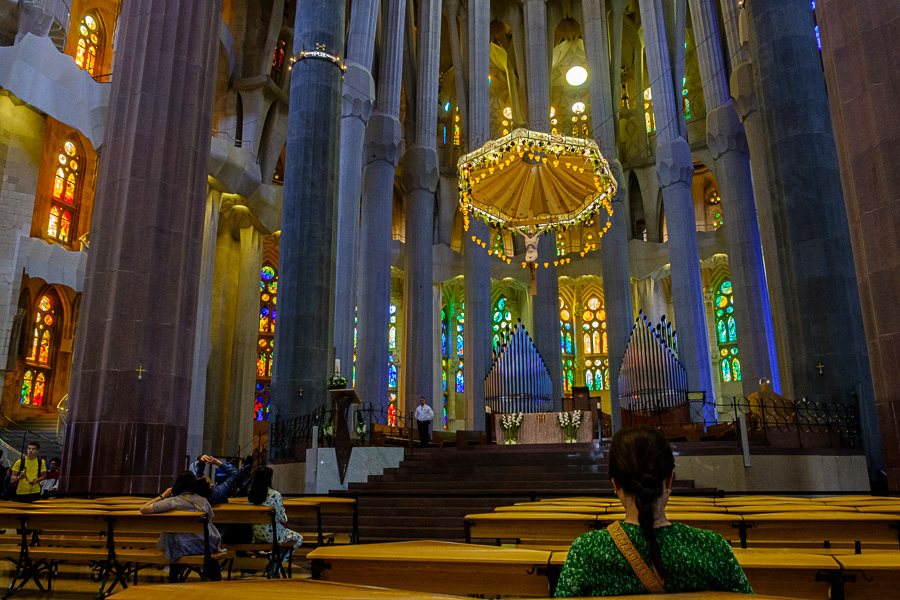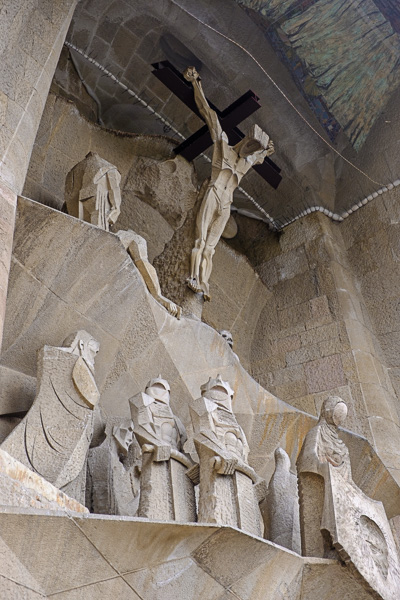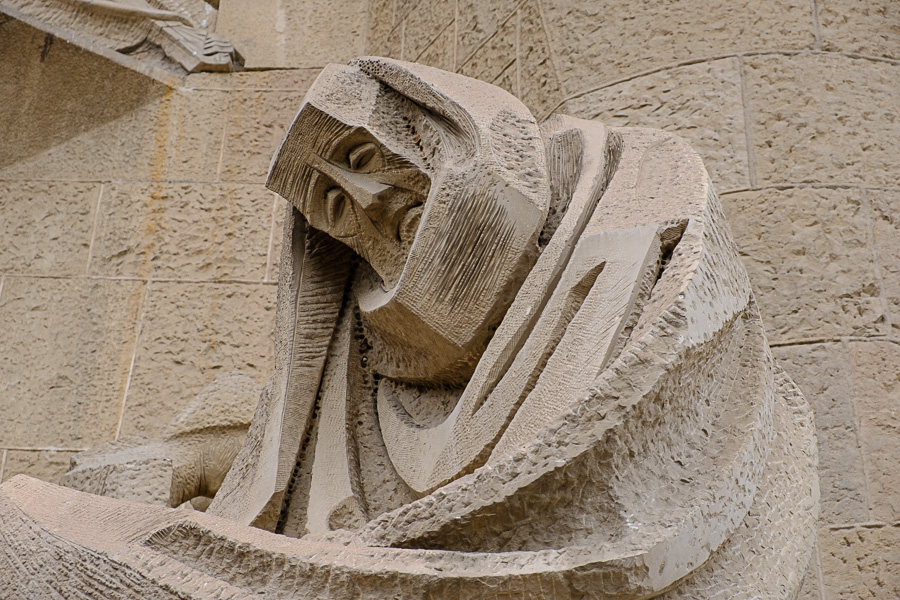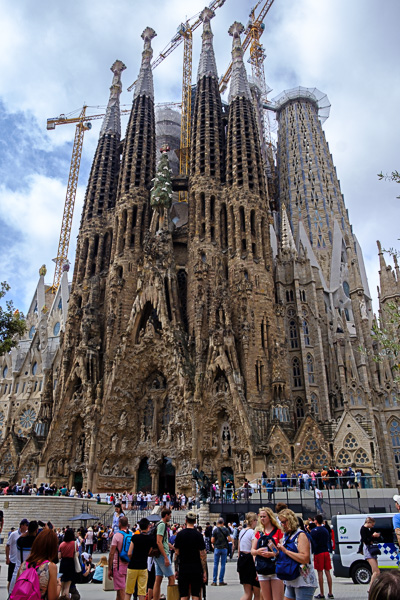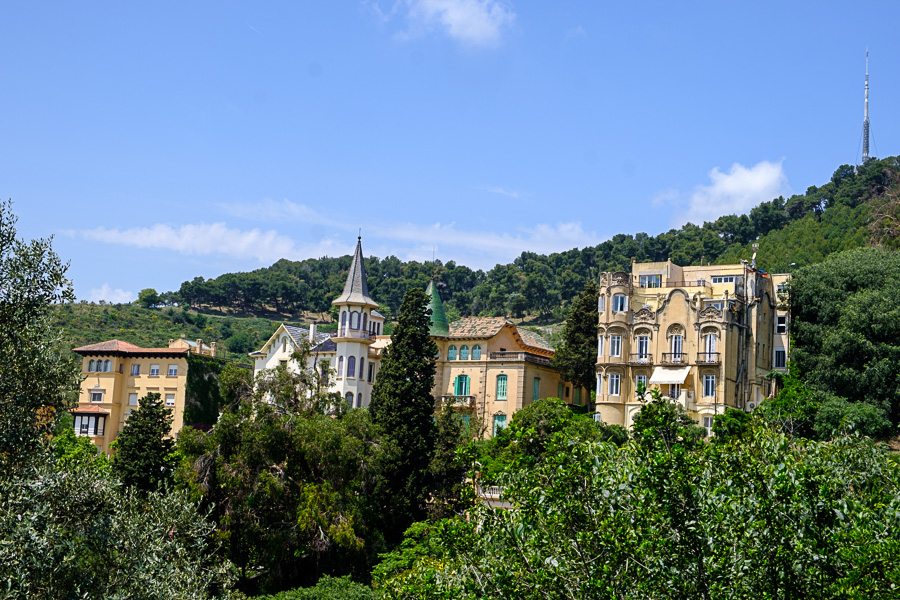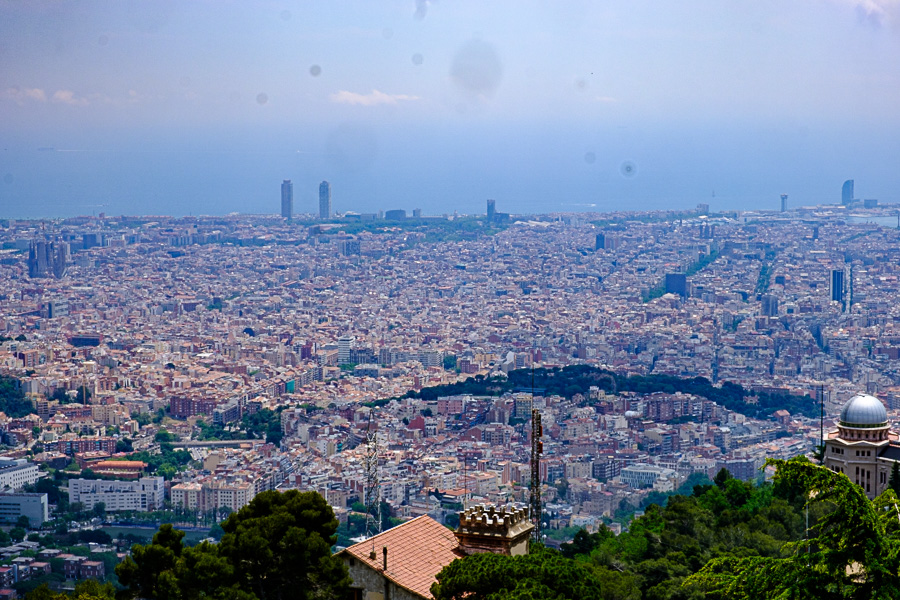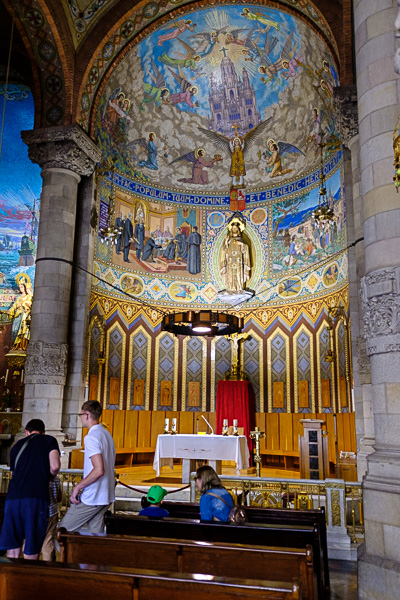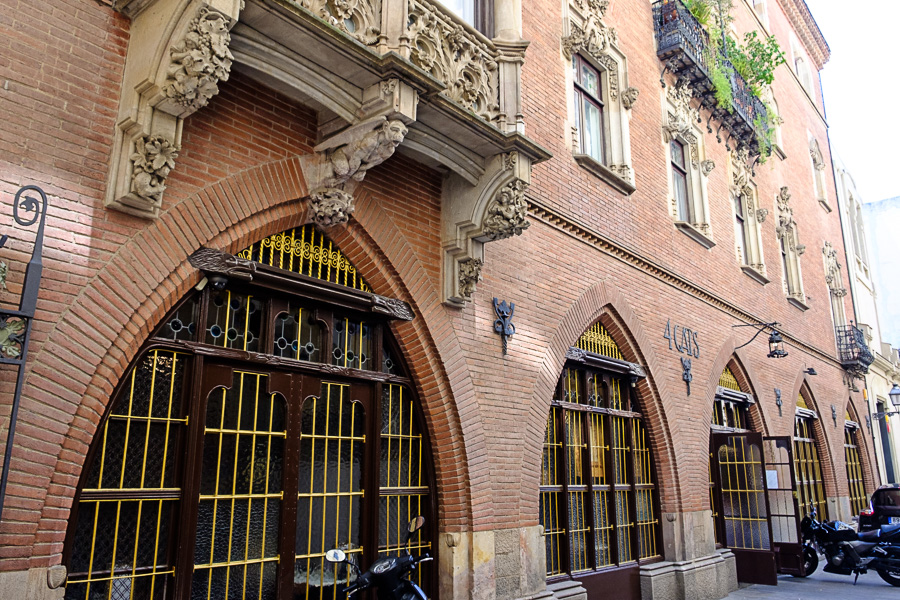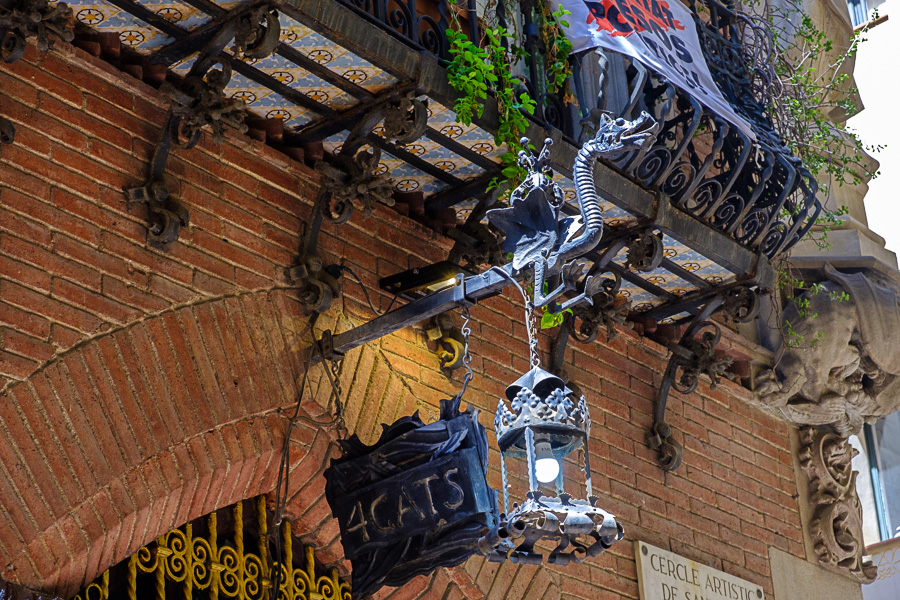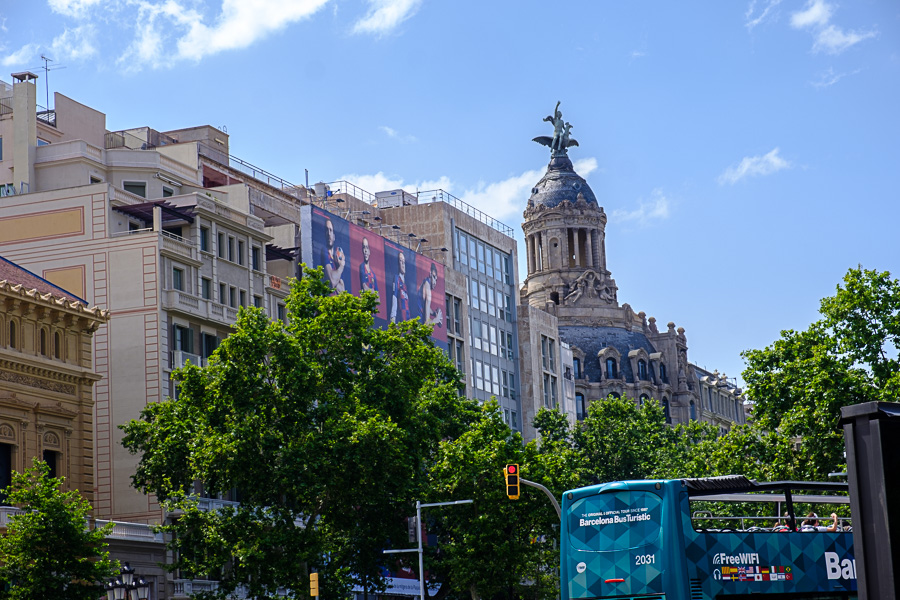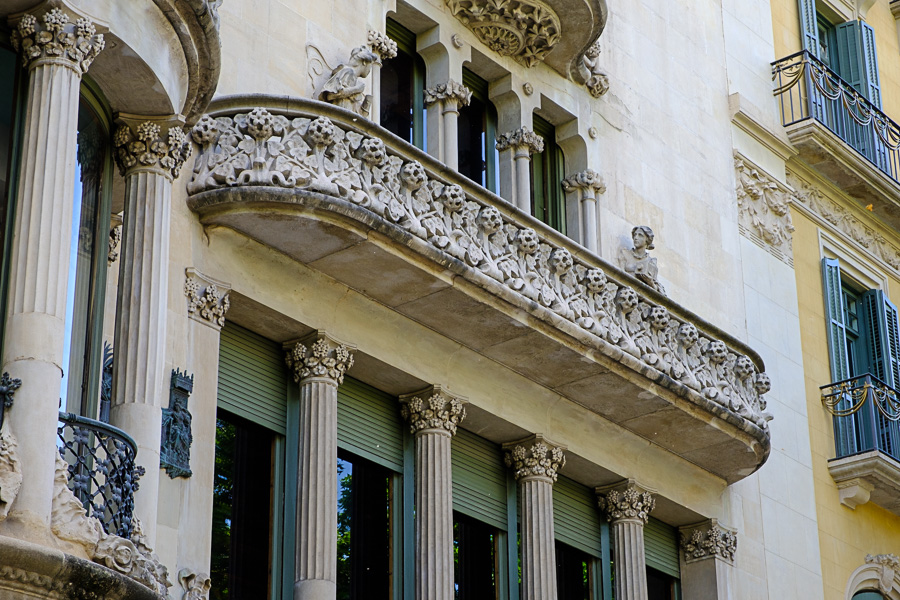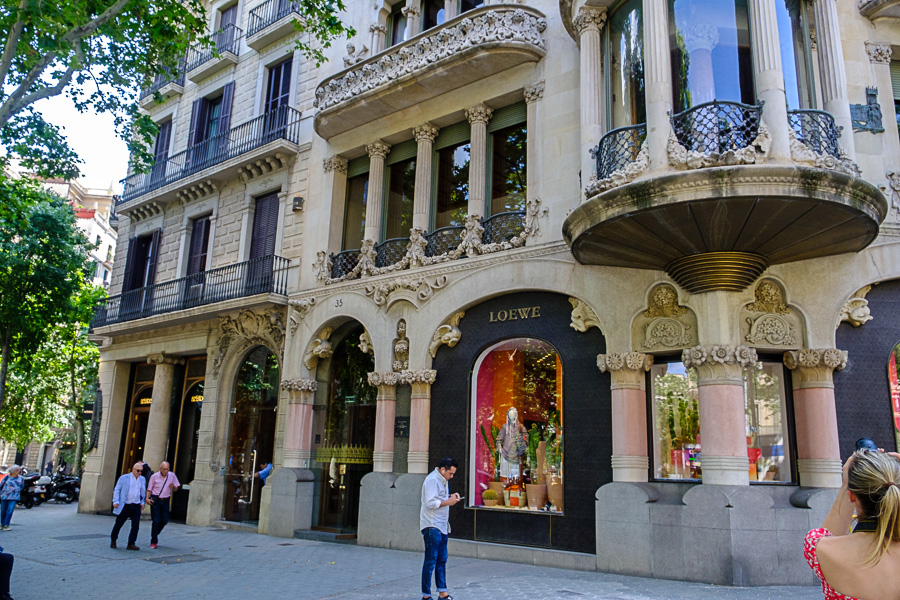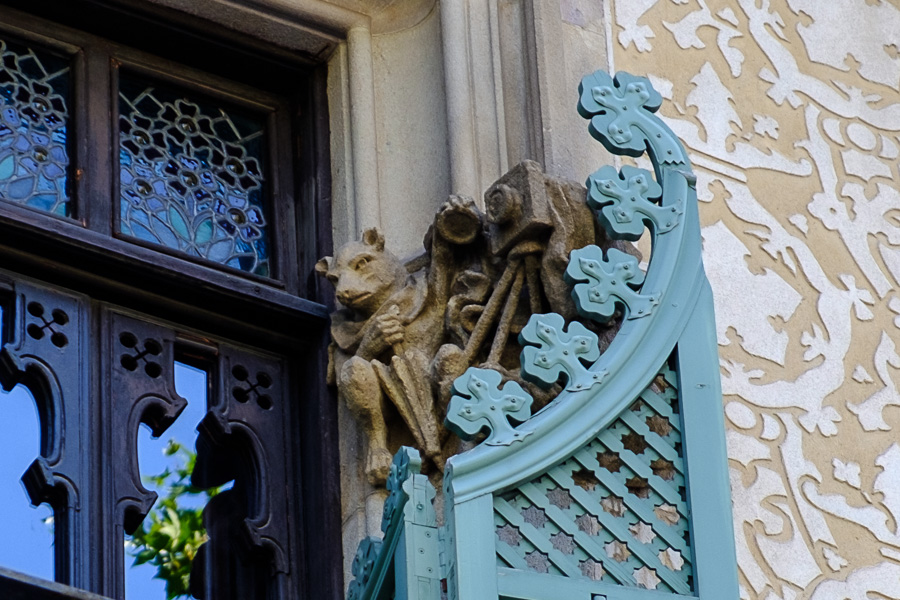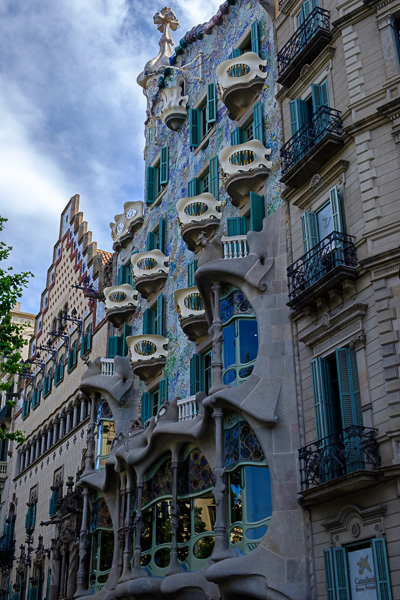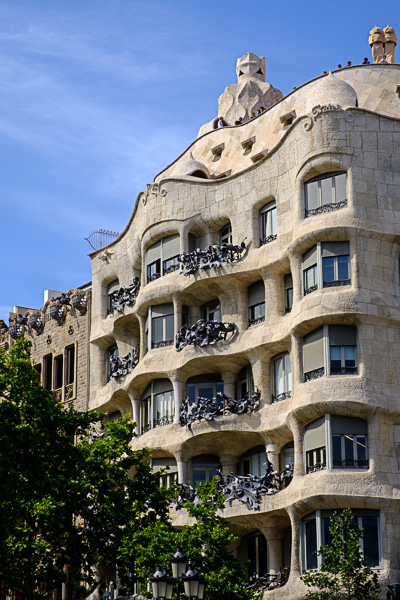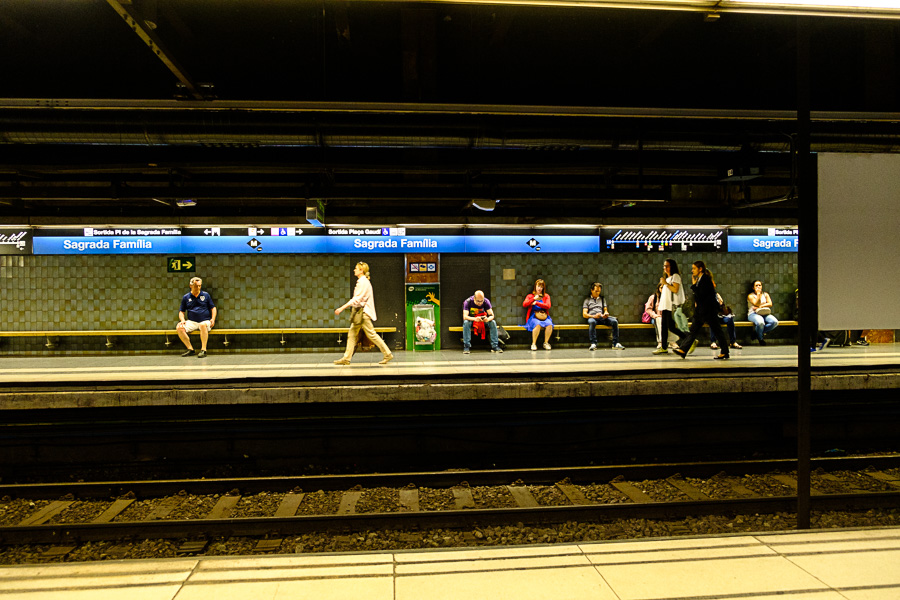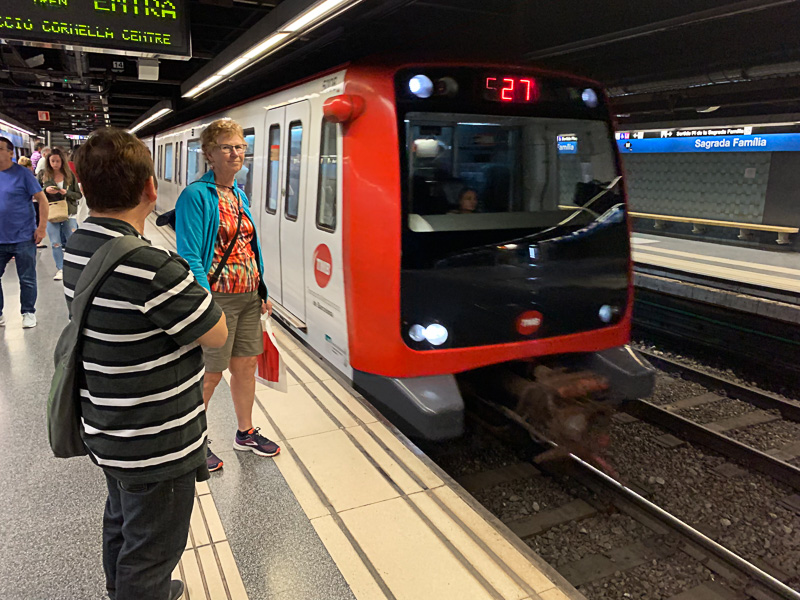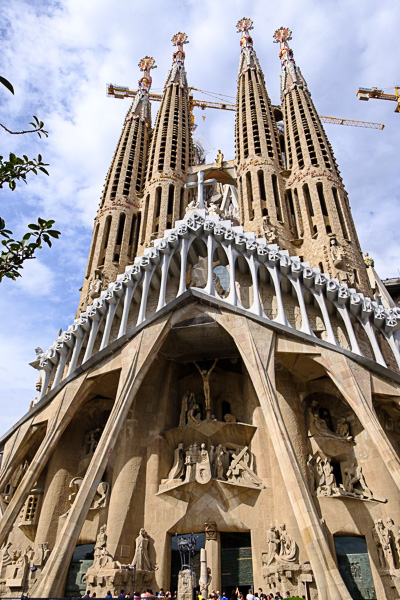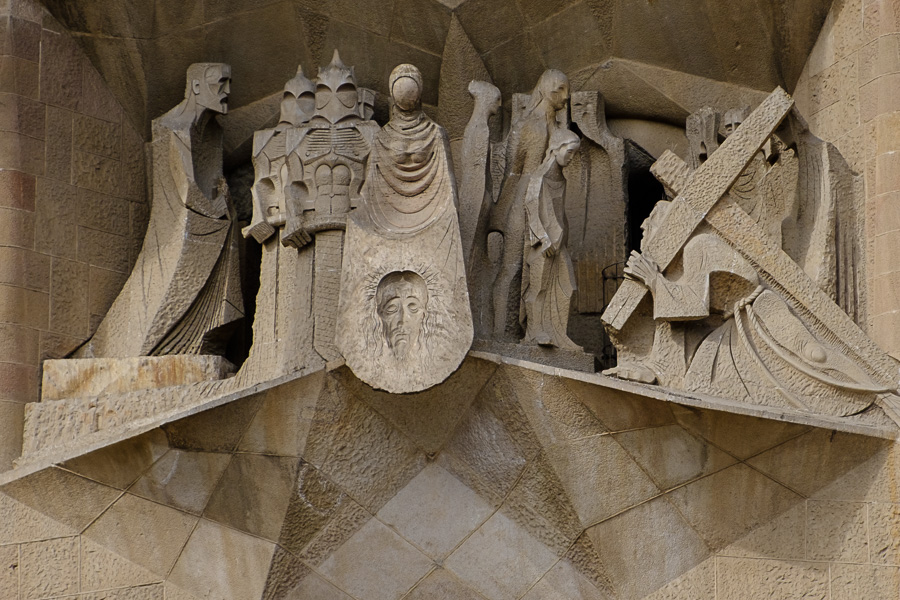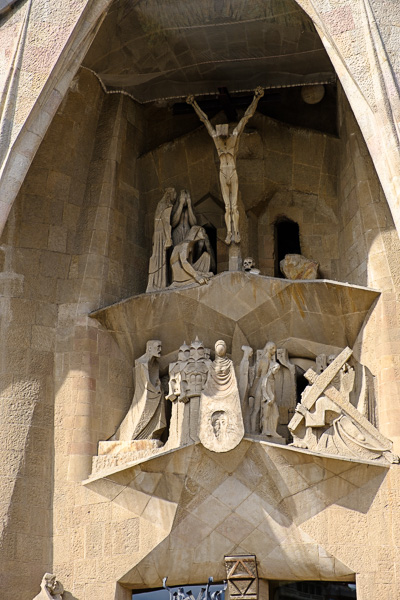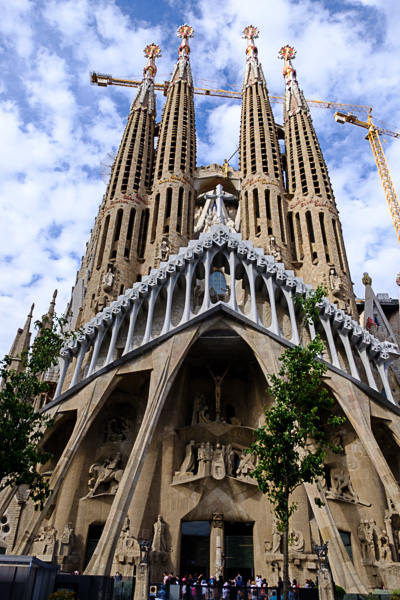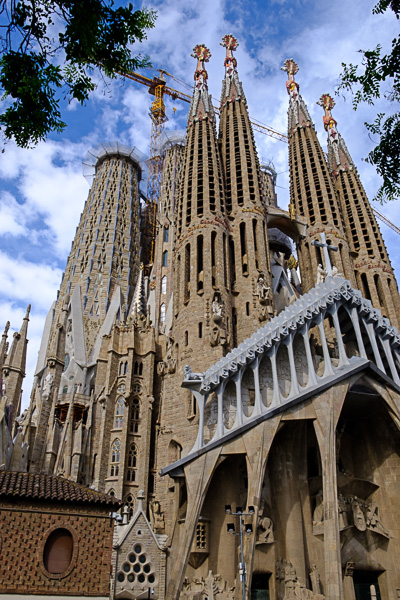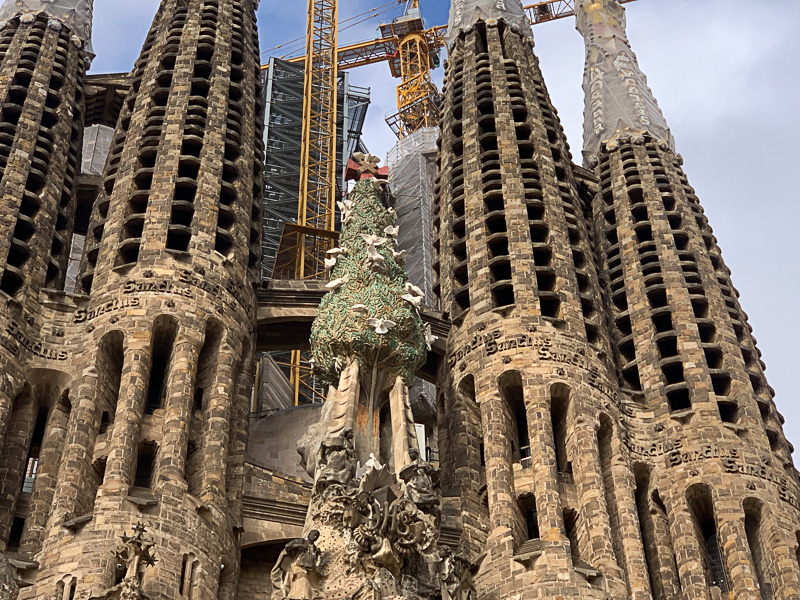After a day sitting in the car we needed some exercise, so off we went. My watch says 20,000 steps covering 8 miles and 31 flights of stairs. Just think how many more steps we would have taken if it weren’t for the five Metro train rides. It’s 6:30 PM and our feet are some sore. So we’ll relax for a bit before hitting the sidewalk café just outside the hotel door. Is it any good? Who knows, who cares. We can’t walk any further.
Activity 1 was to find the Sagrada Familia basilica a half hour walk that we elected to do by Metro. We bought a T10 ticket that gave us 10 rides. Sharing, that equates to five two-person trips.
At the Sagrada Familia we hooked up with our “beat the lines” tour guide. The idea is that we not only get a guided tour but also quick access to the church. I’m not sure how much time we actually saved, this being pre-peak vacation time. The tour guide was OK but spoke with a distinct Catalonian accent, which made him hard to understand. People in this region introduce a lisp in their speech patterns: Barcelona comes out sounding like Barthelona.
To say that Sagrada Familia looks different than any other cathedral or church is to commit a grave misstatement. It’s an amazing structure from several points of view.
The origin of SF (if you’ll permit me to save a few keystrokes) was as a public project to build a church.Josep Maria Bocabella, a Barcelona bookseller, formed Spiritual Association of Devotees of St. Joseph, raised money through public donations and hired Francisco de Paula del Villar. Work was begun in 1882 but Villar quit a year later. Antoni Gaudi was brought in to take over as chief architect.
Gaudi took one look at the gothic revival design and said, “I don’t think so.” He threw out the idea of a gothic structure with its flying buttresses, etc. and came up with a design whose focus was uplifting glorification of God and worship of Jesus and his story. By eliminating the buttress design Gaudi was able to allow much more light to enter the church.
Gaudi was not just a wild-eyed artist. He studied the architectural engineering mathematical aspects of design to ensure that what he envisioned was practical and capable of being built.
When complete, Sagrada Familia will sport eighteen spires: one for each of the disciples, one for each of the four apostles (Mathew, Mark, Luke and John), one for Mary and the highest for Jesus. Its height will be slightly lower than the highest natural point in the area, so as to not overcome the work of God.
Construction was underway fifty years ago when Mom and I visited and completion is anticipated by 2026 (“or maybe 2030 . . .” one guide said). The construction of SF continues to be funded by private donation and by proceeds from ticket sales and souvenir shop revenues. The Roman Catholic Church didn’t consecrate the SF until 2010.
Guadi was run over by a street car in 1926 when the structure was less than 25% complete (it was 70% complete in 2015). Even before his untimely death Gaudi recognized that this would be a multi-generational project. He started the original construction in a way, he felt, that would make it impractical for future generations to stop the project. He left behind models and instructions so that future architects could continue with his vision if not with details that he provided. Indeed, since his death multiple architects and artist have been responsible for the continued design and construction.
After touring until about 11:30 AM or so we had time to kill so I had the bright idea to use some of our Metro rides to ride the funicular to the top of Mount Tibidabo, which sports the Sagrat Cor church, an amusement park and spectacular views of Barcelona spread out in front of you. Today, unfortunately, we had spectacular views of an enormous smog blanket. Oh well, sounded like a good idea at the time.
We only spent a few minutes on the top before realizing we needed to beat feet to the Barcelona Cathedral for our 3 PM free walking tour. So down the hill we walked to the Tibidabo Metro station – maybe 30 minutes – and got off at Catalunya station, near our hotel. From there we walked another 15 minutes, grabbing an ice cream cone for lunch as we walked. We made it with 10 minutes to spare, which gave us just enough time to frequent the nearby Burger King.
And no, we did not break our travel record of never eating at an American fast food joint while traveling abroad (OK, maybe Judy got a Diet Coke in China that one time). We did however use their, ahem, facilities before hiking on with the tour group.
Our tour focused on Catalonian Modernism architecture, a style that is found throughout Barcelona and not just in structures designed by Gaudi. You’re learning from a novice, so take what I say with a shovel full of salt, but Modernism in Catalonia, which had its heyday in the 19thcentury, is defined by three elements:
- Unusual use of materials. For example, a structure might include stone, iron, wood, tile whereas in more traditional designs only one or two elements might be present
- A connection to nature. This can be achieved by simply incorporating plant or animal sculpture pieces in the façade. It can also be achieved through asymmetry. Rather than regular rows of square windows of equal size, a Modernist building features differing sizes and shapes.
- A connection to the city’s cultural and mythical past. In the case of Barcelona, the favorite mythical creature is the dragon. You sometimes have to search for the dragon or dragons but it’s there. Apparently, the local folks were feeding a dragon two lambs a day. When they ran out of lambs, they drew lots and low and behold the princess was the lucky winner. Along comes St. George, who slew the dragon, saving the damsel just as he did in many other 15thcentury legends across Europe. Out of the dragon’s blood sprang a rose. Guess what they sell on April 23 every year? Right roses. Hence the dragon.
We were taken to five houses, three by Gaudi and two by others whose names escaped me. You can see some of what I’m trying to decide in the pictures.
Finally, our guide took us by Metro back to Sagrada Familia where she pointed out some additional architectural elements that we missed this morning.
Tomorrow we’re off on a guided bus tour to Monserrate, a Benedictine monestary north and west of the city. Hopefully today’s tour planner will do a better job than today’s so that our step count comes in at a more reasonable level.


